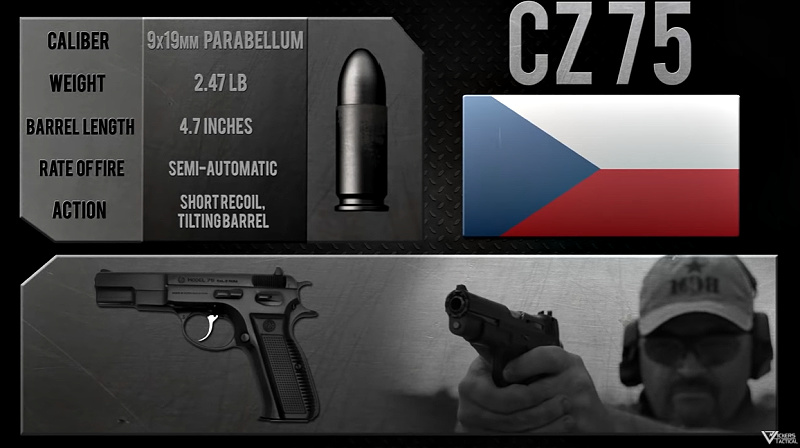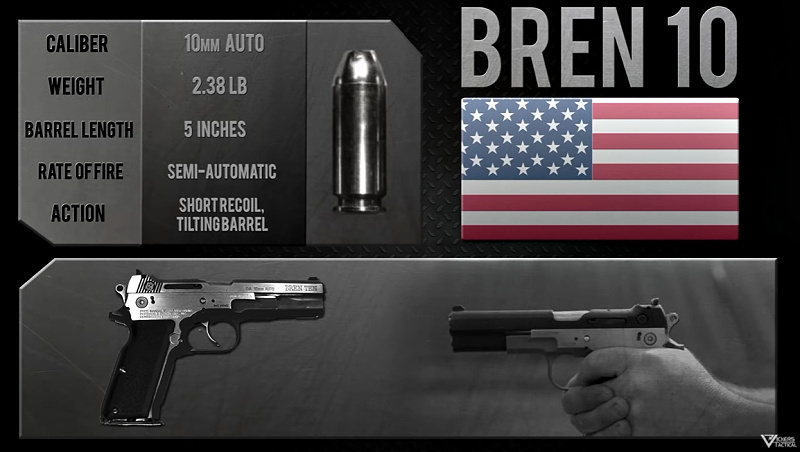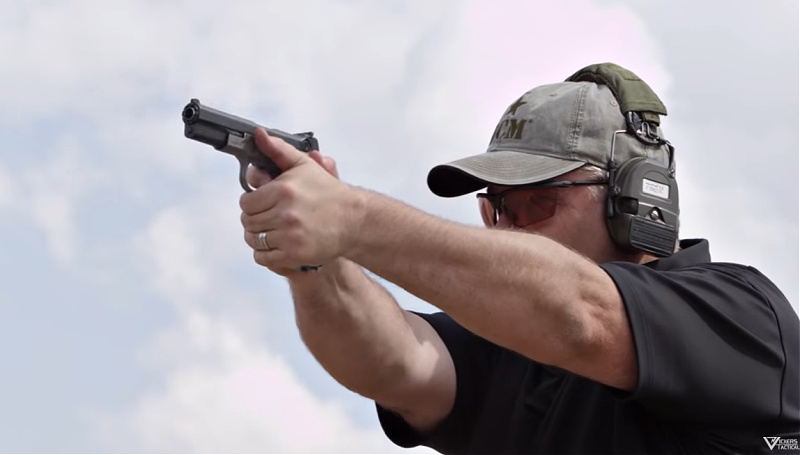Sometimes, even a quality, well-designed (mostly) product will fail. It happens all the time and can be for any number of reasons. Such was the case with the Bren Ten pistol, as explained to us by none other than Larry Vickers. In the late 1970s and early 1980s, a California company called Dornaus and Dixon teamed up with Jeff Cooper, yes, that Jeff Cooper, to create a gun to replace the Colt 1911 as the next “gold standard service pistol.”
I get it, because as good as the 1911 pistol is, by 1980 it was showing its age and was only six years away from being replaced by the Beretta M9. I know there are mixed feelings about that, even now, so I’ll move along. The new design dubbed the “Bren Ten,” was based on the Czech CZ 75, a proven design that is still popular today.
Now, before we get into this thing, I have to wonder how, at that point in history, the US government would view replacing the iconic Colt with an Eastern Bloc design. It’s easy to like CZ now, but 1980 was the year Ronald Reagan started pushing hard against the Soviet Union and communist Eastern Europe. Basing the US military’s standard-issue sidearm on a communist pistol would be, I think, a bit much, especially only a few years after Vietnam. But that’s just me.

Features
Anyway, the Bren Ten took the CZ 75’s double action/single action design, modified and upgraded it, and then beefed it up to a 10mm chambering. I expect Cooper was behind that decision. As Larry says, and we all know, the 10mm is “a very hot and steamy round.” And this was before the 1986 Miami Dade shootout. In fact, according to Larry, Norma was the only company making 10mm at the time.
Like the CZ, the Bren Ten could be carried in “Condition One” — i.e., cocked and locked. Not my thing, personally, but some probably like it. You do you.
Other design features of the Bren Ten include:
- Reversible frame-mounted thumb safety
- Mag release and slide release only on the left side
- Fully adjustable front and rear sights
- Cross-bolt safety on the rear of the slide
- A spring screw on the heel of the grip to keep the mag from falling out, if desired
- Available in two different models, one in 10mm and another in .45 ACP

A few of those features merit further discussion.
First, Dornaus and Dixon, and presumably Cooper, saw the lack of a decocker as a problem. You can carry it in condition one, but, as Larry notes, lawyers are a thing in modern-day America. Take that comment as you will, but the fear of ambulance chasers prompted the addition of the cross-bolt safety, which allows the shooter to pull the trigger to ease the hammer down without the fear of slipping and having a negligent discharge.
Second, the spring screw on the grip could be engaged as the shooter desired. It was thought that soldiers might want the ability to keep their magazines from being dumped on the ground. The idea was a carryover from the CZ 75, but it was executed differently on the Bren 10. I guess it’s fine, but I think I’d be glad it’s an optional thing.
Finally, the Bren Ten debuted with two different commercially available models. The first was the “Special Forces” model chambered in 10mm. This was the “Commander” sized pistol with a shorter barrel. The second was the full-sized “Marksman Special,” which also came in .45 ACP. Both guns operated the same, with the only differences, other than barrel length and available chambering, being cosmetic.

So, Why Did it Fail?
With their stated goal as nothing less than the replacement of the Colt 1911 as the standard-issue sidearm of the US military, Dornaus and Dixon seem to have been remarkably unprepared. They experienced logistical problems from the start, lacking a vendor that could keep up with their demands for sheet metal magazines. Not far into the process, they were actually shipping guns to customers with no magazines. Captain Obvious tells me that’s not a
good thing. Larry doesn’t mention it, but does it seem that chambering a new service pistol in a caliber that hardly anyone manufactures might be an issue too? 10mm is awesome, but the logistics at the time don’t make sense to me, though I expect Cooper was behind the decision since he invented the cartridge.
The cross-bolt safety proved to be an annoyance as well. Because of the location on the slide, it wasn’t difficult to accidentally engage it when racking it. If the shooter wanted to carry in condition one but didn’t realize the safety was on…well, that could be a problem if the need arose to deploy it quickly.
But it was the logistical problems, not lack of quality, that doomed the Bren 10. Dornaus and Dixon were never able to resolve the magazine issues, sales plummeted, and the company went out of business. Larry wonders how that would have played out in the age of the internet and social media. The nosedive would likely have been even steeper than it was.

“It Ain’t Ever Gonna Happen Again”
Larry says that there has been a “Bren Ten curse” ever since Dornaus and Dixon folded. A company called Peregrine planned to bring the pistol back as the “Peregrine Falcon,” but the project never got off the ground. VLTOR Weapon Systems tried debugging the Bren 10 and bringing it back, even displaying it at SHOT Show for a few years, but nothing came of it.
The problem, as Larry sees it, is that the Bren 10 is now outdated. With a steel frame, a snappy recoil caused by shooting 10mm ammo with a high bore axis, and the emergence of more modern polymer-frame guns like the Glock 20, the Bren Ten’s day has passed. Larry says there is no reason to buy a Bren Ten, even if it were available, if you could get a Glock 20.

Now, I understand that choosing between different guns is about as personal a choice as you can get, but he does have a point. If the gun had problems when it was on the leading edge of firearms technology, then it’s going to have them now. There are better options. Larry notes that if someone brought the Bren Ten back today, the only likely interest would be from collectors and a few folks who like the design. In a highly competitive market, it’s probably not worth the risk. The Bren 10 will likely remain a “might have been.”


